Sintering Hematite Iron Ore
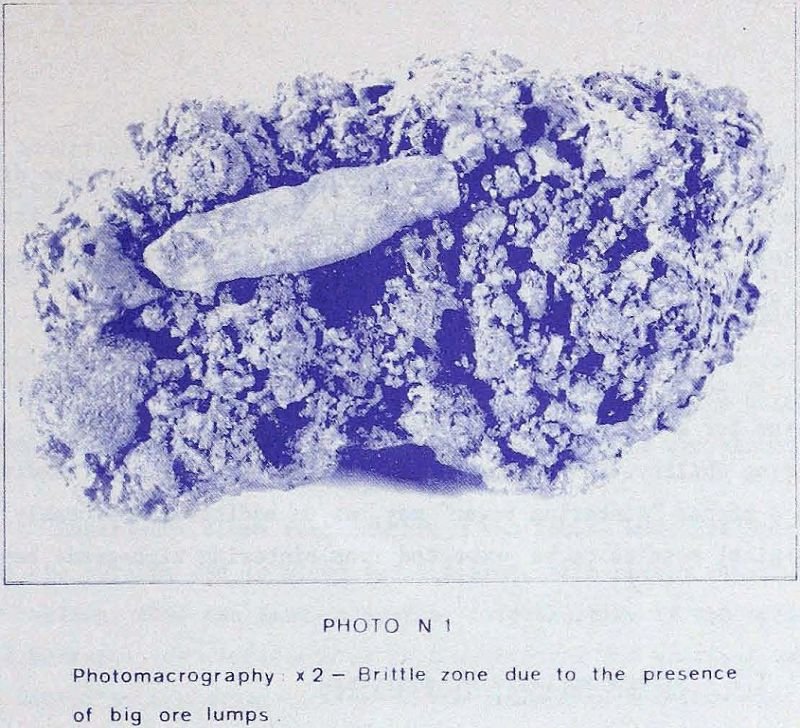
The authors investigate the influence of the basicity index CaO/SiO2 on the sintering properties of hematite ore mixtures. The experimentation was performed with three different mixtures of ores from Tazadit, Nimba, Mano-River, Itabira, Marcona, Goa, Mapawa and Cassinga. Increasing the basicity index CaO/SiO2 between 0.1 and 3, chiefly through limestone admixture makes possible to reduce the […]
Filter Medium in Continuous Vacuum Filtration
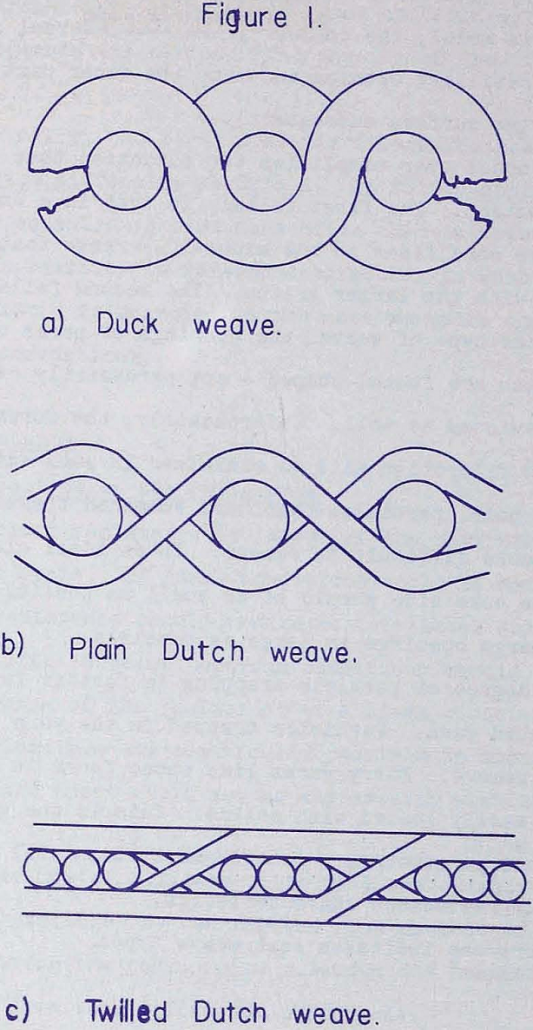
The filter is an apparatus designed to hold the filter medium. At such a medium takes place the entire liquid-solid or gas-solid separation process. Hence, the medium is really the essence of filtration. Yet, the medium, an originally clean porous substance with trapped solids in it, is perhaps the most neglected part of filtration research. […]
Uranium Mill Waste Disposal
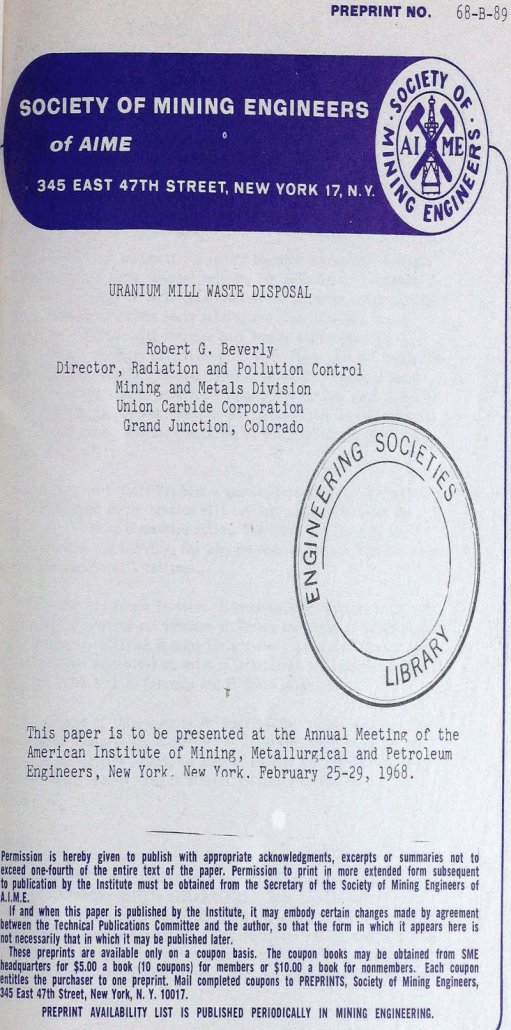
The presence of radioactivity in uranium mill wastes has resulted in somewhat unique waste disposal methods. In addition to the common problems of disposing of large quantities of solid wastes, neutralizing acids, minimizing dissolved heavy metals, and clarifying all liquid effluents, the uranium mill operator must sample and analyze liquid effluents for micro-micro quantities of […]
Underground Storage and Distribution of Hydraulic Fill
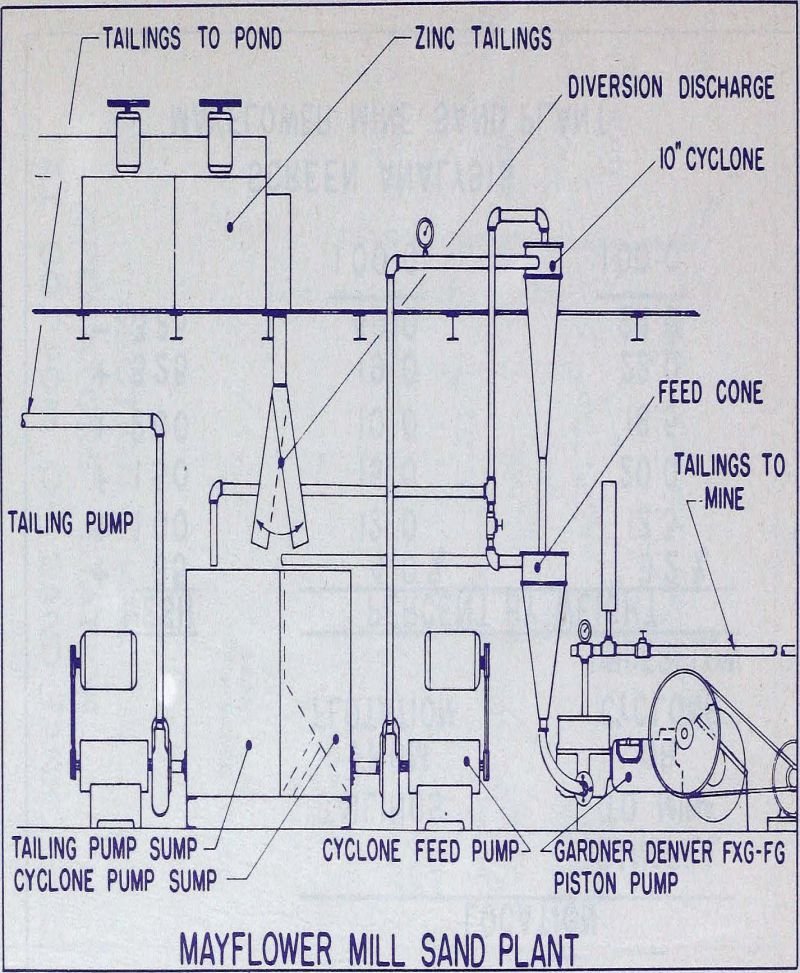
Many factors, some of which are not easily defined or described, must be considered in the design of a hydraulic backfill system. After participating in the design of several plants, I have a conviction that future refinements in sandfill systems must come in large part, from the merging of good design ideas and information from […]
Depressants and Flocculants in Iron Ore Beneficiation – Starches and Starch Derivatives
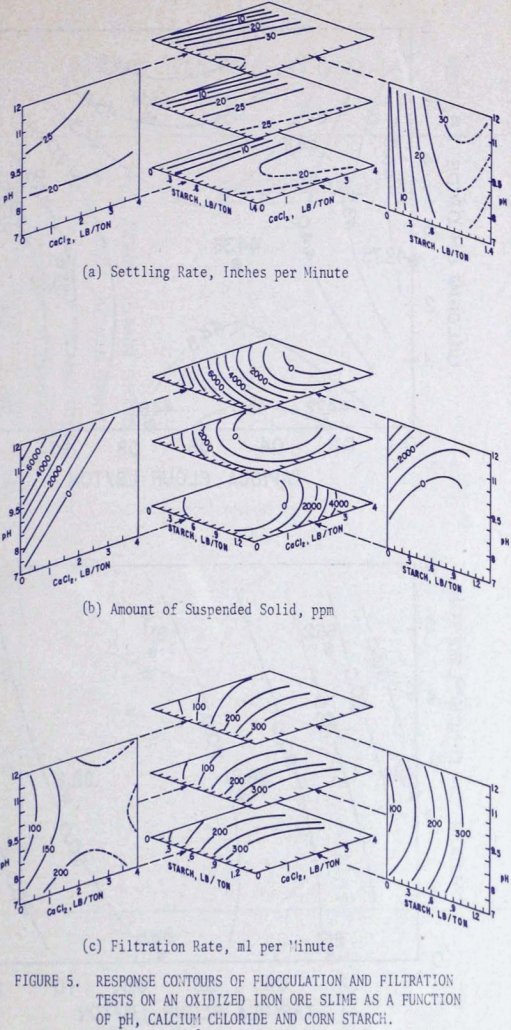
This article discusses the effect of physical and chemical modifications of starches on the anionic and cationic flotation of silica from oxidized iron ores and magnetite-taconite concentrates, and the results of the interaction of starch, pH, and calcium ions on the flocculation, clarification, and filtration of iron ore slimes and magnetite- taconite tailings. Starches, particularly […]
How to Recover Silver from Waste Photographic Solutions

Metallic displacement-type silver recovery units are economical and practical for use by either large- or small-scale photographic processors. Most photographic processors could significantly increase their income by utilizing a unit of this type. The large-scale processor may find it advantageous to use the metallic displacement-type unit as a scavenger following an electrolytic cell. Electrolytic units […]
Secondary Breakage in Taconite Open Pit Mining
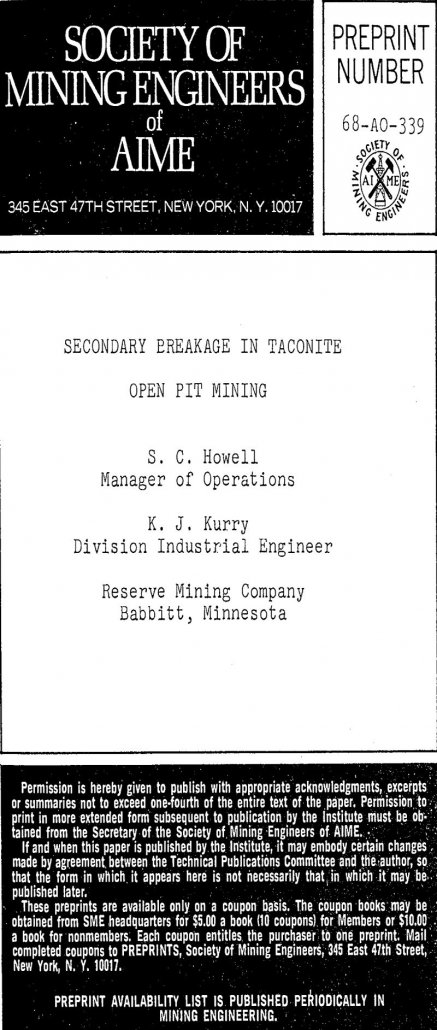
The mining of taconite, to provide feed for a processing plant, requires that the flow of material continue uninterrupted. This means first, that the crude must be of a size acceptable to the primary crusher in order to reduce the delays caused by plugging the crusher with chunks. Secondly, elimination of oversize in the pit […]
Use of Rocket Jet Burners in Quarrying of Granite
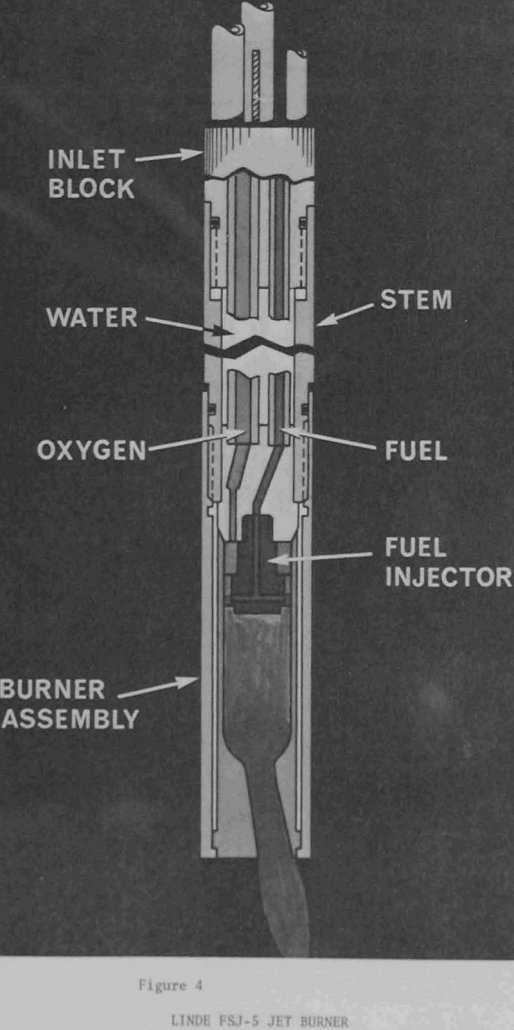
The first step in the quarrying of granite, following removal of any overburden material, involves the freeing of large blocks from the formation. For many years the use of explosives was the accepted method of obtaining these blocks. Even today there are operations where this is considered to be the most economical method even though […]
Priming and Boostering Anfo with Slurry Explosives
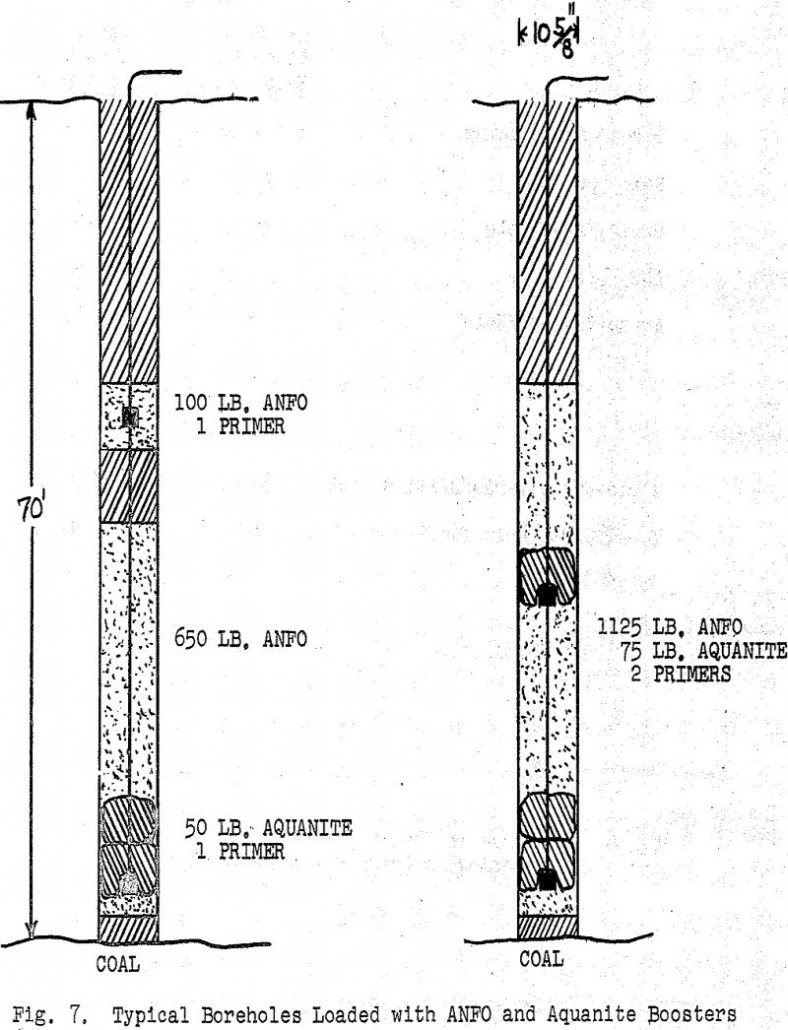
Following the wide-spread acceptance of ANFO as a useful, low cost blasting agent, studies have been made to adequately describe the physical and explosive properties of this material. As the quality of the AN blasting prill improved, reliability and sensitivity to initiation were greatly increased and many methods of priming were chosen from the standpoint […]
Flow of Solids in Bins

There used to be a time when bins were designed for total volume and placed in any available place of the plant. Poke holes were provided and feed was maintained by manual prodding, lancing, hammering, and by various mechanical flow-promoting devices. Little thought was given to what occurred inside the bins and why materials did […]
